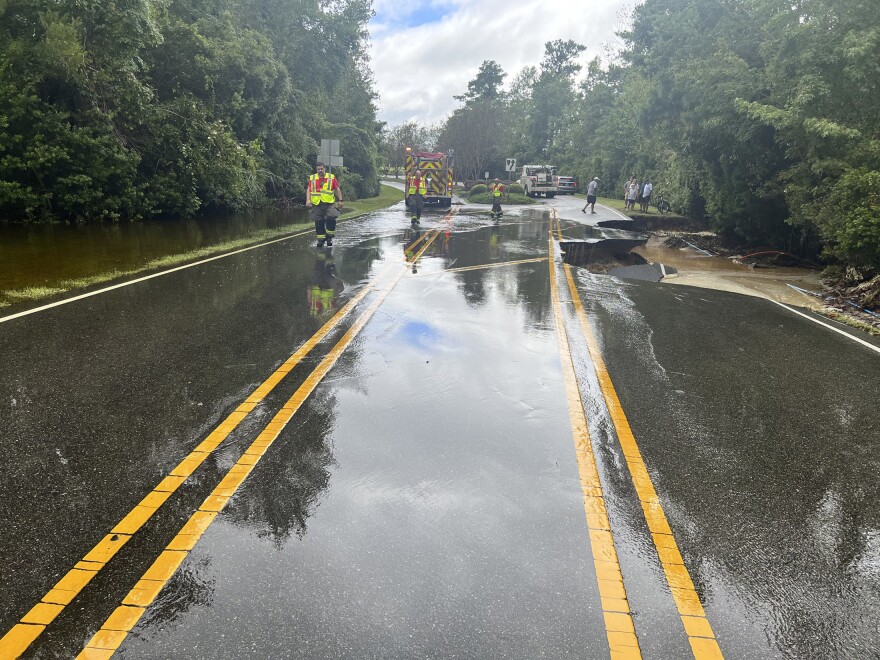Parts of southeastern North Carolina were still underwater Tuesday after a storm that wasn't quite organized enough to get a name dropped historic amounts of rain on an area that has suffered floods of a lifetime at least four other times in the past 25 years.
The flash flooding closed dozens of roads in Brunswick County, including U.S. Highway 17, which is the main coastal route. Floodwaters swamped the highway at several points for most of the day, trapping some drivers on high ground that became an island.
Emergency workers brought food and water to people as they waited for the waters to recede, Brunswick County emergency officials said. No deaths were reported but dozens of roads in the county were damaged and many washed out.
Monday's deluge centered on Carolina Beach south of Wilmington, where more than 18 inches (46 centimeters) of rain fell in 12 hours. That amount of rain in that period of time qualifies as a so-called 1,000-year flood expected only once in a that era, meteorologists at the National Weather Service office in Wilmington said.
Several blocks of the coastal town were flooded to the bottom of car doors for hours Monday as the system, known as Potential Tropical Cyclone No. 8, never organized enough to become the eighth named tropical storm of the season, Helene.
It's not the first historic flood in the region by any measure.
Hurricane Diana in 1984 brought more than 18 inches (46 centimeters) of rain to the area and forecasters noted that it was the first time a tropical event had dropped a foot (30 centimeters) of rain to the area.
Since then, the area just southwest of Wilmington saw 20 inches (51 centimeters) of rain in Hurricane Floyd in 1999, which was once the benchmark for heavy rain.
An unnamed storm in the wake of Hurricane Matthew in 2010 dropped about 11 inches (28 centimeters) of rain on Brunswick County and a 2015 deluge as Hurricane Joaquin moved well offshore dropped 20 inches (51 centimeters) of rain.
And in 2018, Hurricane Florence brought what is now the touchstone for historic flooding across the region with 30 inches (72 centimeters) of rain.
The blame for recurring floods of a lifetime can be placed on rising temperatures because of climate change, said Tim Armstrong, a meteorologist with the National Weather Service in Wilmington.
"The warmer the air, the more moisture it can hold," Armstrong said Tuesday.
As the three massive floods from unnamed storms show, it doesn't take a powerful hurricane, just the right combination of atmospheric factors to end up with big floods over small areas.
"The worst of Monday's flood was centered over just parts of two counties," Armstrong said.
The rain from the system had moved into southeast Virginia on Tuesday. Along North Carolina's Outer Banks, the storm closed vulnerable coastal highway North Carolina 12 on Ocracoke Island and threatened several homes in Rodanthe, where erosion and rising sea levels have destroyed more than a half-dozen beachfront homes this decade.
The Atlantic hurricane season continues through the end of November.
In an updated hurricane outlook last month, the National Oceanic and Atmospheric Administration was still predicting a highly active season thanks to near-record sea surface temperatures and the possibility of La Nina. Emergency management officials have urged people to stay prepared.
Elsewhere in the Atlantic, Gordon remained a tropical depression as it swirled through open ocean waters. Gordon could either dissolve in upcoming days or strengthen back into a tropical storm, forecasters said.







